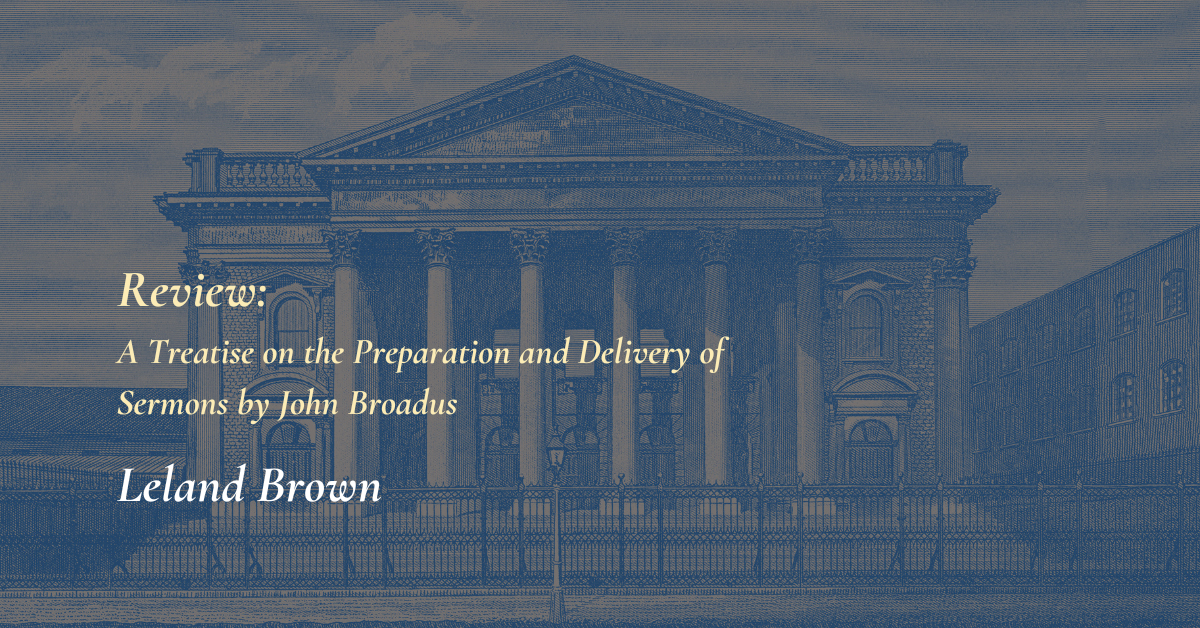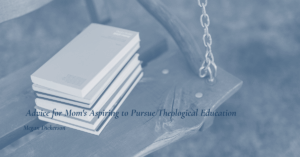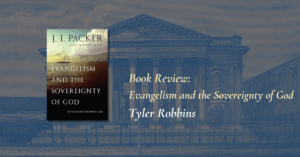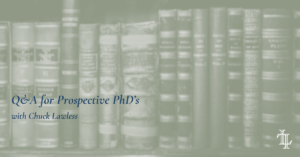Editor’s Note: This book review correlates with the book recommended by Dr. Bill Henard in our Q&A for Prospective PhDs Series. If you have not read Dr. Henard’s article, you can find it here.
The Baptist Preaching Classic
“Just read Broadus.” This is my advice to all preachers and teachers of preachers. It seems odd to recommend a 150-year-old preaching textbook, especially with the large number of excellent contemporary works available. But On the Preparation and Delivery of Sermons is a classic in preaching pedagogy. It combines biblical conviction, instruction in rhetorical excellence, and immense wisdom on the life of the preacher and dynamic elements involved in preaching.
Let the Reader Beware
I first purchased On the Preparation and Delivery of Sermons for a preaching small group I was leading, only to discover this 19th-century minister recommending filming oneself! I soon discovered that this was the fourth revision (1979) of Broadus’s original. I searched online and found an older used copy. This was yet another (the third) revision with a significant amount of material edited out, altered, and added. The original is accessible—however readers must pay close attention to publication information.
First published in 1870, On the Preparation and Delivery of Sermons was extremely popular with multiple first editions published to meet demand. Charles Dargan planned to collaborate with Broadus for an updated edition before Broadus’s untimely death. Using Broadus’s notes and his personal conversations with Broadus, and approving all changes with Broadus’s family, Dargan published the first major update to the work in 1898. The “Dargan edition” is faithful to the original, adds several useful sections, rearranges some material in a fitting manner, and likely represents Broadus’s own editorial desires. However, Harper and Row published two subsequent new editions, revised by Jesse Weatherspoon (1944) and Vernon Stanfield (1979). These revisions have their merits, but alterations instituted to the original are—according to this reviewer—borderline unfaithful and even scandalous. Broadus’s original footnotes are in many locations removed along with most of his interaction with classic and earlier Christian sources. Readers should look for either the first edition (accessible for free digitally here and here, no hard copies in print) or the second “Dargan” edition (free digitally here, hardback available here). The following review cites the first edition (1870).
Summary
Broadus begins by showing preaching’s essential place and defining its essential nature. While other means are important, preaching “is characteristic of Christianity” (17), and the key means for conversion and discipleship (18). But preaching well is immensely difficult, and preachers must labor for excellence in this work (19), striving for “eloquence,” which is “so speaking as not merely to convince the judgment, kindle the imagination, and move the feelings, but to give a powerful impulse to the will,” (20). In other words, eloquence in preaching moves the heart, mind, and will, to love God and neighbor.
From this vision for preaching the book naturally unfolds the process of sermon preparation, being broken up into five parts: (1) The “materials” (i.e. content and content development) of sermons, (2) the arrangement of a sermon, (3) style, (4) delivery, and (5) conduct of public worship.
Content
First, Broadus discusses the various factors that determine a sermon’s content and the sources a preacher draws from in developing it. He addresses the selection and interpretation of texts, the various kinds of sermons, and the various materials preachers draw from for sermon creation. Broadus wisely remarks that the lion’s share of material for sermons are a result of “previous acquisition and reflection;” thus, preachers must commit themselves to a lifestyle of acquiring broad knowledge which will be useful to their people (118-126). Chapters 5-8 works through the four core components of sermon content: explaining texts, making arguments, illustration, and application.
Arrangement
Arrangement is almost as important as a sermon’s content. The preacher is an “architect” who must take the materials of his sermon and build a structure “suited to a particular design” (241)–to move the will of its hearers. Here Broadus emphasizes the need for a clear plan for every discourse (don’t start writing your sermon until you have a plan!) and addresses issues like introductions, conclusions, the proposition (the “big idea” or “thesis” in today’s discourse), and divisions (sermon points). This section concludes with a discussion on the several kinds of sermons and contains Broadus’s interesting appraisal of expository preaching (see below).
Style
Style concerns the way in which a speaker talks, as opposed to the content or arrangement of the sermon. It is “his manner of expressing his thoughts” (319-320) which reveals his “whole mental character” (321). While each preacher has a characteristic style that should not be forsaken for something artificial or studied, his natural style must be improved for the sake of his hearers. To this end Broadus recommends the study of language, literature, and most of all, careful practice in speaking. Good style is perspicuous (339)–clear but not overdone, energetic (357)–containing appropriate force and passion, and finally, elegant–beautiful and of good taste (380). The conclusion of this section contains an illuminating discussion on the creative process and especially the use of imagination in preaching (395-405), which the second and subsequent editions move to Part 1.
Delivery
While discussing reading and recitation as potential delivery methods, Broadus commends “extemporaneous speaking” as best: a sermon whose content and arrangement has been carefully planned but whose exact language is “left to be suggested at the moment” (425). While not a hard and fast rule, this approach is best for accomplishing the purposes of preaching: moving the hearts and wills of one’s audience. Broadus’s practical wisdom on the various other matters related to delivery is timeless.
Conduct of Public Worship
The inclusion of this section shows Broadus’s commitment to preaching as a part of public worship but not the whole. Here he exhorts ministers to take heed of intentional hymn selection, public prayer, and the reading of Scripture, not only as preludes to preaching but as essential for worship that honors God and builds up believers.
A Classic From Another Era
Like many classics, On the Preparation and Delivery of Sermons is renowned by many but read, practiced, and assigned by few. My chief encouragement to pastors, preachers, and professors would be to use this book! Its “eloquence” and engagement with the core questions of preaching make it essential reading for anyone who preaches; it also raises interesting questions about retrieval, the use of general revelation, and a common modern assumption about the exclusivity of expository preaching.
On the Preparation and Delivery of Sermons models the eloquence it commends. This is the book’s distinguishing and perhaps best feature. Some of Broadus’s counsel might be given in modern textbooks, but none says what he says with such “eloquence”–the kind of language designed to move human hearts to action. Passage after passage resembles this striking opening to the book:
when a man is apt in teaching, whose soul is on fire with the truth which he trusts has saved him and hopes will save others, speaks to his fellow-men, eye to eye, face to face, and electric sympathies flash to and fro between him and his hearers, till they lift each other up, higher and higher…’till they are born as on chariots of fire above the world–there is a power to move men, to influence character, life, destiny, such as no printed page can ever possess (18).
If his “printed pages” had such power, one wonders what it would have been like to hear “the greatest of living preachers” preach!1This is a commendation of Broadus attributed to Charles Spurgeon by A.T. Robertson. See A. T. Robertson, Life and Letters of John A. Broadus (Philadelphia: American Baptist Publication Society, 1901), 356. This is a part of the power of this book. The elevated yet precise language, use of metaphor and illustration, tight argumentation, concrete application, vivid prose that moves its hearers–these are exactly how we should preach according to Broadus. The book thus not only tells, but shows preachers how to be eloquent, which matters because eloquence is typically caught better than taught.
Yet it is not just its “eloquence” that makes this book so valuable. On the Preparation and Delivery of Sermons strikes the balance between preaching theory and preaching practice. Modern textbooks tend towards practicality: after the usual definitions and exhortations about preaching, they focus on particular methods for interpretation, sermon outlining, and developing illustrations and applications. While not neglecting these essentials, Broadus spends a good deal of time discussing the what of these practical aspects. What exactly is style? What is an argument? What is the creative process by which we choose materials and arrange them into a sermon, and what can a preacher do to improve his general capacity for creation? Broadus’s engagement with these questions helps the book get beyond “tips and methods” and give timeless instruction on these practical matters.
On the Preparation and Delivery of Sermons is also instructive as a book of a different era. For example, unlike most modern preaching instructors, Broadus is immersed in the Christian tradition and regularly interacts with the teachers of preachers outside of his time and tradition. One can hardly imagine a prominent Southern Baptist preaching professor today recommending Chrysostom’s Catholic-sounding Six Books on the Priesthood; Broadus calls it “charming” and loves Chrysostom’s advice on preaching!
Consider also Broadus’s love of Alexander Vinet (1797-1847), a French reformed Protestant (almost wholly unknown today) who held some views quite at variance with him. But Broadus cites Vinet as the one he is most indebted to and says that his posthumous book on preaching is the best in existence. Remarkably, another Baptist titan of this era, B.H. Carroll, draws extensively from Vinet’s Pastoral Theology in his published lectures on ministry. With contemporary discussions about retrieval and appreciation for other traditions a flashpoint in Baptist life today, Broadus and Carroll are models for responsible Baptist engagement and retrieval from other traditions and eras. This also shows the non-insular nature of Southern Baptist intellectual life in this era regarding preaching and pastoral ministry, a feature wewould do well to consider.
Broadus is also immersed in the rhetorical tradition and is unashamed to cite Aristotle and Cicero with great appreciation. He is appropriately eclectic in his use of sources, appreciating non-biblical rhetorical sources and critically interacting with them. Strikingly, there is very little analysis of sermons in the Bible in an attempt to discern a biblical homiletic; nor are there word studies on the Greek words for “preaching” and “teaching” as giving homiletic models (at least in the first two editions!) Broadus rather looks to the great orators of history and what has been understood as good communication throughout the ages. He appears to see special revelation as determining the content and end of preaching but puts general revelation in the driver’s seat for communication best practices.
Broadus’s qualified endorsement of systematic expository preaching is another “different era” feature of the book. He classes expository sermons along with other kinds of legitimate sermons, such as “subject-sermons” and “text-sermons.” And while he commends expository preaching, he does so with manifest cautions: the preacher must work harder at developing unity in his sermon, he must take more care to apply the truth well, he must avoid verse-by-verse preaching that bogs hearers down in details, he must strive for variety even as he sequentially exposits texts, and he must avoid belaboring the difficulties of a passage in his sermon. Expository preaching is thus the most difficult kind of preaching; preachers should study long and gradually break their congregations into this sort of preaching (300-318).
With systematic expository preaching being seen as the exclusive form of faithful preaching in many circles, Broadus’s cautions about it remind us that preaching is ultimately a pastoral act—the people of God, their capacity and interest, and their edification must be kept squarely in view. Pastors who are 74 weeks into their sermon series on Hebrews 7 should especially heed Broadus’s cautions and counsel on doing this well. Systematically preaching through books of the Bible is hardly a badge of honor if its practice burdens rather than blesses congregations.
Conclusion
For beginning and veteran preachers alike, On the Preparation and Delivery of Sermons is a treasure of wisdom and instruction. It also offers an illuminating look into 19th-century Baptist intellectual life, and like any classic, offers great fruit for anyone willing to engage with it.
Author
-

Leland (PhD, The Southern Baptist Theological Seminary) is a pastor at East Cooper Baptist Church in Mount Pleasant, South Carolina and is an assistant editor at the London Lyceum.
View all posts




